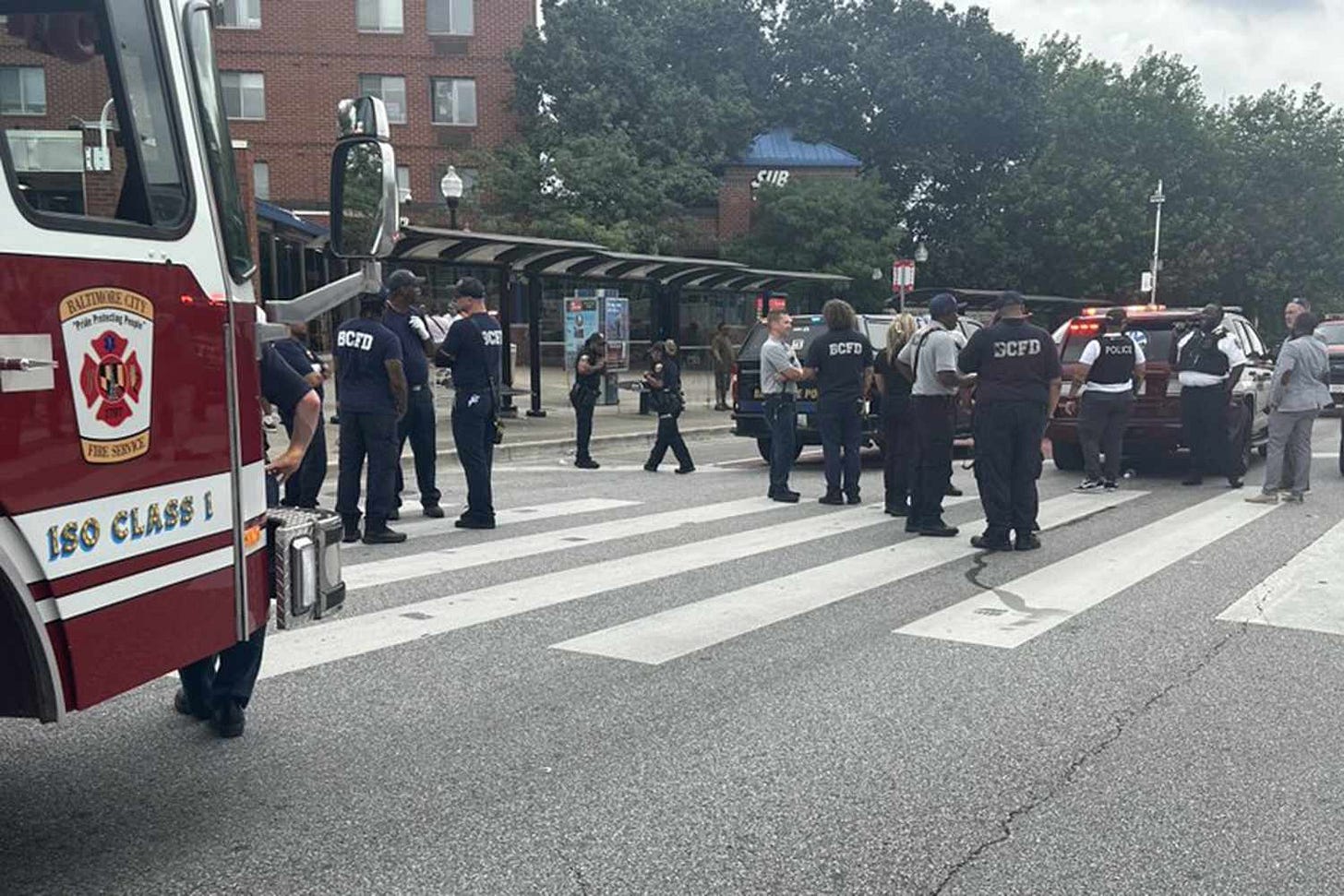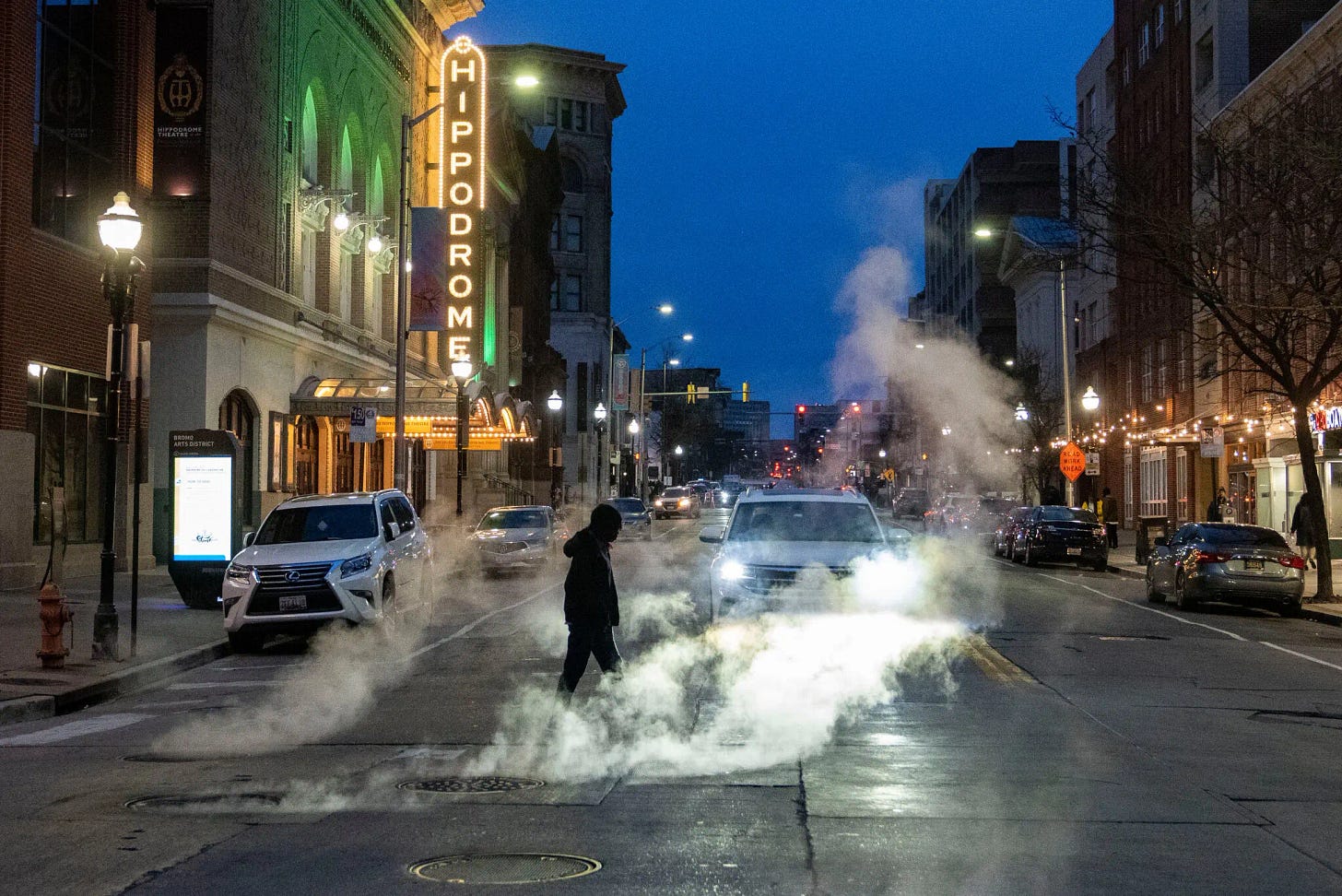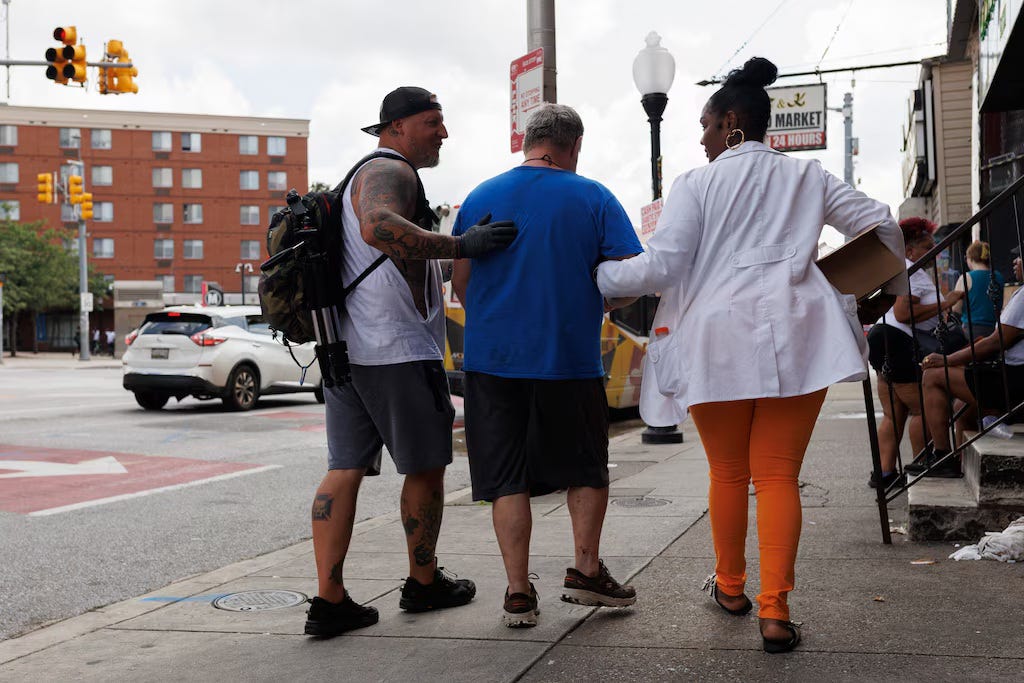Baltimore Mass Overdose: A Stark Reminder of the Ongoing Opioid Crisis
Over 27 hospitalized in a single day, highlighting the city’s growing public health challenge.

A mass overdose occurred in Baltimore’s Penn-North neighborhood on July 10, with more than 27 people hospitalized after first responders found multiple unresponsive individuals near the intersection of Pennsylvania and North Avenues.
“Along North Avenue, along Pennsylvania Avenue, both subway platforms, and then off the beaten path along some of the alleys,” said Baltimore Fire Chief James Wallace, describing the scene.
Despite five people being in critical condition and others in serious condition, no fatalities were reported. Multiple medics responded to the scene as the scope of the incident became clear.
“This is a level-one mass casualty event,” Wallace said.
“So for us, regardless of the nature of the call, the amount of patients scripts how we respond to this. And we've done just that.”
“New Jack City”: A Cause for Concern?
The drug allegedly involved in the mass overdose is known as “New Jack City”—named after the 1991 film—and is reportedly laced with either fentanyl, heroin, or both.
“Unfortunately, it either has Freon or antifreeze added to it,” a police officer told Fox Baltimore.
While similar substances have been found in Philadelphia and Los Angeles, Baltimore residents said the overdose event followed a “sampling” organized by local drug dealers.
“Man, they are going crazy trying to find that stuff,” said Andres, a resident of the Carrollton Ridge neighborhood.
In that same report, Robin Wherley, an assistant state’s attorney under Baltimore City State’s Attorney Ivan Bates, acknowledged the scale of the drug crisis in certain areas of the city.
“We certainly have a drug problem in Baltimore City, but that’s everywhere. That’s not just here,” she said.
“We do have open-air drug markets. Anyone who lives or drives through the city can see that. I would say yes.”
She added that while the mass overdose remains under investigation, the public should remain vigilant.
“I think people need to understand that any drug can kill you,” she said.
“Depending on the formula, depending on what it is cut with, depending on what may be nearby. You might think you’re buying heroin, [but] you may end up with something completely different.”
A report from The New York Times found that more than 6,000 people died of drug overdoses in Baltimore between 2018 and 2024—more than any other major U.S. city—as national concern over fentanyl continues to rise.
“This is an issue that we’re doing a lot of work on and that we can and will do more work on,” said Mayor Brandon Scott in the report, adding that the city’s response “requires a lot, lot more resources” than are currently available.

According to the Centers for Disease Control and Prevention (CDC), drug overdoses are the leading cause of death among Americans ages 18 to 44. Fentanyl is estimated to be 50 times stronger than heroin and 100 times stronger than morphine. Additional research from the Brookings Institution found that 537,344 Americans have died from opioid overdoses since 2012—the year fentanyl entered the U.S. drug market. Since 2021, the country has averaged more than 100,000 drug overdose deaths annually.
However, in 2024 the CDC reported a 24% drop in drug overdose deaths, with an estimated 87,000 fatalities compared to 114,000 in the previous year—the fewest overdose deaths since June 2020.
“It is unprecedented to see predicted overdose deaths drop by more than 27,000 over a single year,” said Dr. Allison Arwady, director of the CDC’s National Center for Injury Prevention and Control, crediting improved responses to the opioid epidemic.
“That’s more than 70 lives saved every day. CDC’s public health investments, our improved data and laboratory systems for overdose response, and our partnerships with public safety colleagues in every state mean that we are more rapidly identifying emerging drug threats and supporting public health prevention and response activities in communities across America.”
How Officials Responded
In a statement, Baltimore City State’s Attorney Ivan Bates said the mass overdose served as “a powerful reminder of our city's ongoing battle against the opioid epidemic.”
“Since this morning, prosecutors from my office have been in contact with and are ready to assist their counterparts at BPD who are on the scene. I commend the first responders who saved lives today, and I hold hope in my heart for the victims’ swift and full recovery,” he said on the day of the overdose.
In a post on X, Maryland Gov. Wes Moore said the state was working closely with city officials in response to the crisis.
“I’m grateful to those who quickly alerted us about this situation, and those who are providing support to the community,” he wrote.
City Councilmember Isaac "Yitzy" Schleifer said community members “deserved” to hear directly from incoming Baltimore health commissioner Dr. Michelle Taylor about her plans to address the epidemic.
“Now more than ever, our communities deserve to hear directly from the proposed health commissioner about her plan to tackle the leading cause of death in our city — the opioid epidemic,” Schleifer wrote on X.
Mayor Brandon Scott highlighted the contributions of community members at the scene and emphasized the harm-reduction methods used in the emergency response.
“Harm-reduction teams worked together to mobilize resources like the Spot Mobile Van and deployed to canvas the area, including nearby vacant dwellings,” Scott said.
“Teams distributed Narcan, test strips, safe use kits, and other harm-reduction resources aimed at reducing overdoses.”
Scott later reiterated that the city’s goal is not to criminalize people struggling with addiction but to connect them with services and treatment.
“The days of approaching drug addiction and overdose as a criminal thing are gone,” he said.
“The police department will deal with the actual folks that are providing and dealing drugs, and bringing this into the community. But when you are talking about folks that are using, we have to be ready to help them with the services they need—when they are ready for them.”
How the Community Responded
Since the mass overdose, local organizations such as the Enoch Pratt Free Library have stepped in to support recovery efforts in the Penn-North community, providing resources like Narcan.
“Harm reduction saves lives,” Carolyn Vidmar, a community impact manager at Enoch Pratt, told CBS Baltimore.
In a report from The Baltimore Banner, Donna Bruce, a community advocate who has struggled with substance abuse and lost a son to a drug overdose, said she was shocked by the incident.
“I have never seen anything like this in my life,” she said.
“I am just speechless right now.”
In the same report, Candy Kerr, a spokesperson for the Baltimore Harm Reduction Coalition, acknowledged the city’s response but said it was “too little, too late.”
“It’s unfortunate that it took a mass overdose event to have this kind of response to an area that has been exposed to overdoses for the last 30 years,” Kerr said.

Residents of the Penn-North neighborhood also expressed doubt that the increased attention would be sustained.
“I’d give it like a week or so,” Elijah Bradley told The Banner.
Terrance Lunn, a training manager with the Powell Recovery Center, which specializes in substance abuse treatment, said the spotlight on the opioid crisis would likely fade quickly.
“This is the news today,” Lunn said.
“Next week, it’ll be something else. Are we going to forget Penn-North?”





